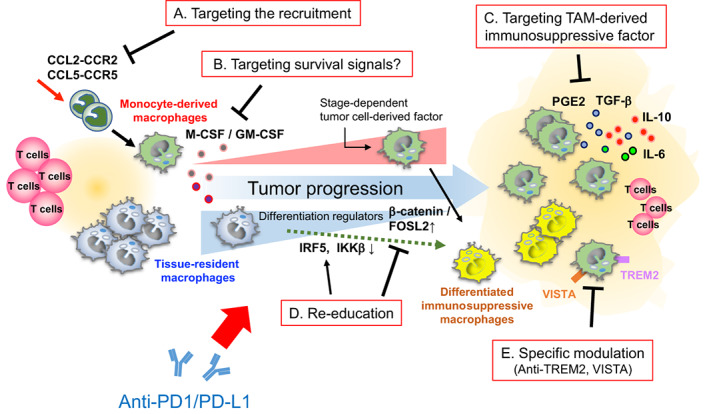FIGURE 4.

Treatments targeting tumor‐associated macrophages (TAMs) to improve the therapeutic efficacy of anti‐programmed death 1 (PD1)/PD1 ligand 1 (PD‐L1) therapy. Multiple modes of targeting TAMs to restore resistance to anti‐PD1/PD‐L1 therapy. (A) Anti‐PD1/PD‐L1 therapy combined with inhibiting the recruitment and infiltration of macrophage precursors (monocytes) in the tumor microenvironment (TME). (B) Ameliorating the survival signals responsible for the maintenance of immunosuppressive TAMs can effectively prevent the infiltration of TAMs in the TME. (C) Specific inhibition of TAM‐derived immunosuppressive factors. (D) Re‐education of immunosuppressive TAMs to the immunostimulatory phenotype by modifying the expression of differentiation regulators. (E) Combination of precise and specific targeting of immunosuppressive TAMs in the TME together with anti‐PD1/PD‐L1 therapy improves the responsiveness to treatment. CCL, C‐C motif chemokine ligand; CCR, C‐C motif chemokine receptor; FOSL2, FOS‐like antigen 2; GM‐CSF, granulocyte/macrophage colony‐stimulating factor; IKKβ, inhibitor of nuclear factor kappa‐B kinase subunit β; IL, interleukin; IRF5, interferon regulatory factor 5; M‐CSF, macrophage colony‐stimulating factor; PGE2, prostaglandin E2; TGF‐β, transforming growth factor‐β; TREM2, triggering receptor expressed on myeloid cells 2.
